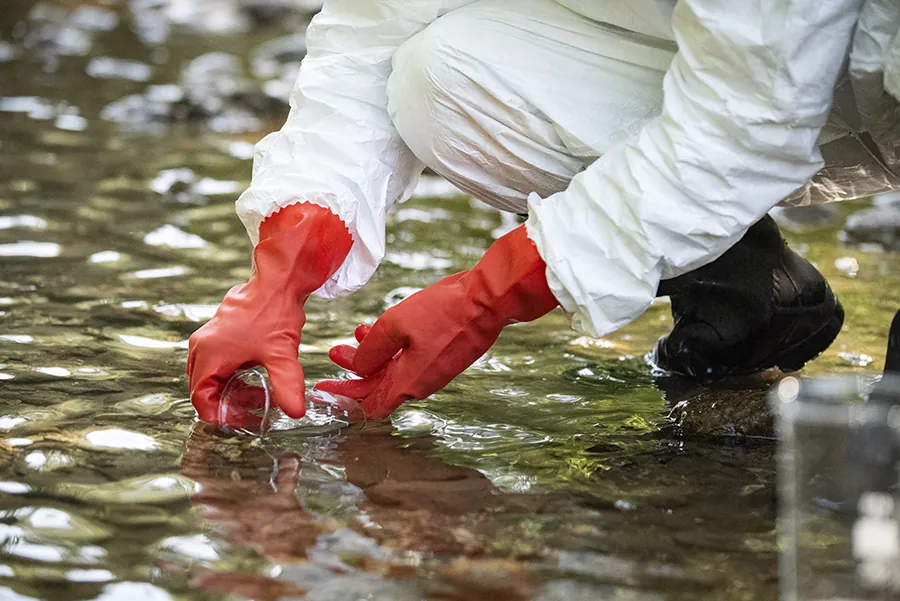Raleigh, NC: (919) 277-9299

Anthony served in the military when the contaminated water at Camp Lejeune was silently poisoning the Marines and their families. Today, he proudly flies two flags as signs of his patriotism and life dedicated to military service, and like other survivors of Camp Lejeune, this veteran and his family deserve our full attention. From his wheelchair, Anthony shares how his life has been changed by the diseases associated with exposure to Camp Lejeune water, and how the Government has made folks like him feel unseen, unheard, and forgotten. But the words of this husband, father, and grandfather, show his resolve: “I ain’t got one good eye but I can see. This is about justice and it takes ‘just us’ to go through justice.”
The stories of service members affected by diseases associated with exposure to Camp Lejeune’s contaminated water are being validated by science. The hardships and health problems can no longer be written off as coincidences. Every military member, civilian, and family affected by contaminated water at Camp Lejeune finds hope in the research by agencies dedicated to revealing the truth. The Government can no longer ignore the scientific studies of the health problems Camp Lejeune veterans experienced due to the contaminated water.
How Does Contaminated Water Cause Disease?
When water contains toxins, like those found in the contaminated water at Camp Lejeune, and that water is used for drinking, cooking, and bathing, the chemicals are ingested, inhaled, and absorbed into the bloodstream, causing epigenetic changes that result in diseases.
Evidence of Contaminants in Camp Lejeune Water
Test results included trichloroethylene (TCE) and perchloroethylene (PCE), two chemicals that weren’t suspected, but were prominent; the water tested positive for vinyl chloride and benzene as well. An analysis of the water sampling showed that levels of volatile organic compounds (VOCs) in drinking water from 1957 to 1987 exceeded the maximums allowed as defined by the EPA. This information has been essential to linking diseases associated with exposure to Camp Lejeune water.
Scientific Studies of Health Problems in Camp Lejeune Residents
In the intervening years after the chemicals were discovered in Camp Lejeune water wells, the compounds have been studied extensively. Exposure to drinking water containing VOCs, trichloroethylene (TCE), perchloroethylene (PCE), vinyl chloride, and benzene has been linked with various types of cancer, cardiac birth defects, and other health problems, including neurobehavioral issues.
Scientific studies classify TCE as a human carcinogen and PCE as likely to be carcinogenic; benzene and vinyl chloride are known human carcinogens. This helps explain why some of the most common diseases associated with exposure to Camp Lejeune water include adult leukemia, bladder cancer, kidney cancer, liver cancer, multiple myeloma (cancer of the plasma), and non-Hodgkin lymphoma (blood cancer).
ATSDR Studies on Camp Lejeune Chemicals
The Agency for Toxic Substances Disease Registry (ATSDR) has been studying the health risks of the hazardous substances found on the base since the 1980s, a time when the EPA was also studying the contaminated water supplies at Camp Lejeune. Per the ATSDR, there is sufficient evidence that the following health effects are caused by chemicals in the water, including TCE, PCE, benzene, or vinyl chloride:
- Kidney cancer
- Non-Hodgkin lymphoma
- Cardiac defects
- Bladder cancer
- Leukemias
- Liver cancer
Cancer Incidence Study
The recent ATSDR cancer incident study is an influential study about the diseases associated with exposure to Camp Lejeune drinking water. Not only did this study confirm the connection between contaminated drinking water and an elevated risk of various types of cancer, but it has opened the door for even more researchers to continue their work to help veterans and their families.
Mortality Cohort Study
The ATSDR conducted a cohort mortality study to examine causes of death for military personnel and civilians stationed at Camp Lejeune compared to Camp Pendleton residents. The findings suggest that people exposed to the contaminated water at Camp Lejeune experienced increased hazard ratios for several causes of death, including kidney cancer, esophageal cancer, and female breast cancer.
Additional follow-up will be necessary to fully evaluate the mortality of this population. Though this cohort study is only a first step in understanding how exposure to contaminated water is linked to Camp Lejeune veterans’ causes of death, it offers hope to many awaiting answers for why loved ones were taken too soon.
The Significance of Scientific Studies for Past Camp Lejeune Residents
Understanding the science behind Camp Lejeune water contamination provides a knowledge base to help protect future generations of military members from these toxic chemicals. An estimated one million Camp Lejeune residents were kept in the dark for years while contaminants poisoned the water that they drank, prepared meals with, and bathed in. Research is instrumental in shedding light on the presumptive conditions for Camp Lejeune veterans and the diseases associated with the contaminated water.
